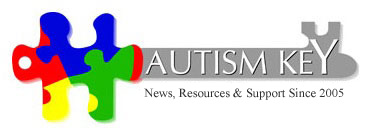New Tool Allows Children with Autism to Express Emotions
As parents of children with autism, we are always searching for useful ways to help our kids communicate their thoughts and feelings, and thereby achieve greater self-regulation. How many spectacular meltdowns could be averted if a child was capable of properly conveying a powerful inner feeling in lieu of kicking or screaming?
With self-awareness, viable alternatives to destructive and repetitive behavior become accessible and grievous misunderstandings a child encounters with adults and other students at school would be diminished. Teetering connections could become new friendships when a child is able to engage in communication towards those beyond family members.
Asperger’s Syndrome expert Dr. Tony Attwood has long seen Cognitive Behavior Therapy (CBT) as an excellent tool for helping children with autism come to terms with their condition. CBT maintains that self-awareness of thoughts and emotions and how they affect a person lead to greater command of situations that would normally be overwhelming.
Previously, Dr. Attwood has published workbooks for children on the autism spectrum to help them learn about their feelings and developed a “toolbox” of strategies for dealing with them. I remember going through such a workbook for anxiety with my son a while back. He ranked stressful situations on a visual thermometer, thought about how his body reacted to them, then came up with his own self-calming strategies. This exercise actually lead me to having new accommodations written into his IEP. Because he was the one that came up with them, they proved very effective.
Now, Dr. Attwood, in conjunction with Dr. Kirsten Callesen and Dr. Annette Moller Nielsen of Denmark, have created a Cognitive Affective Training (CAT) kit designed to help children and young adults with developmental disabilities communicate with adults and one another. Essentially, he has taken his workbook and has made it three dimensional, making it more engaging to use and share.
Appropriate for all ages, the CAT-kit was years in the making and has now proven to be effective as an easy, hands-on program designed to promote awareness of how thoughts, feelings and actions intersect. Through the process of using various visual components, children and adults have the opportunity to understand their emotions and share newfound awareness with each other.
The CAT-kit’s website describes some of the product’s benefits:
Therapists and other professionals consider the CAT-kit an easy, hands-on adaptation of the cognitive-behavioral strategies they are already familiar with. The kit allows professionals to obtain valuable information regarding the thoughts and feelings that exist behind students’ behaviors, while providing a non-stressful environment where professionals can work on students’ self-awareness and self-control. The CAT-kit elements can easily be integrated into comprehensive CBT programs.
I plan to ask my son’s special education teacher to acquire this kit for his classroom as part of an ongoing campaign to improve his school life and will report back on its effectiveness.

